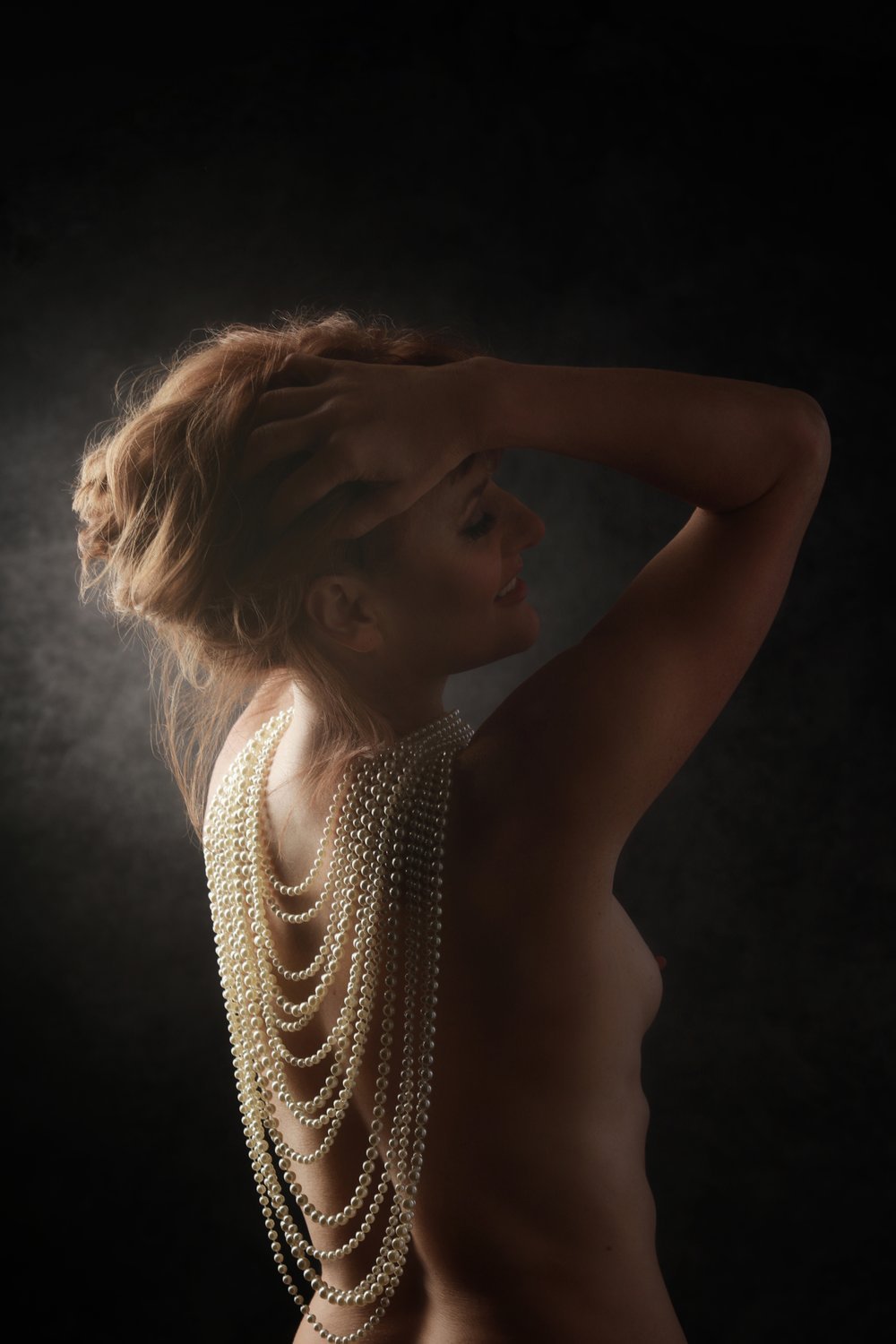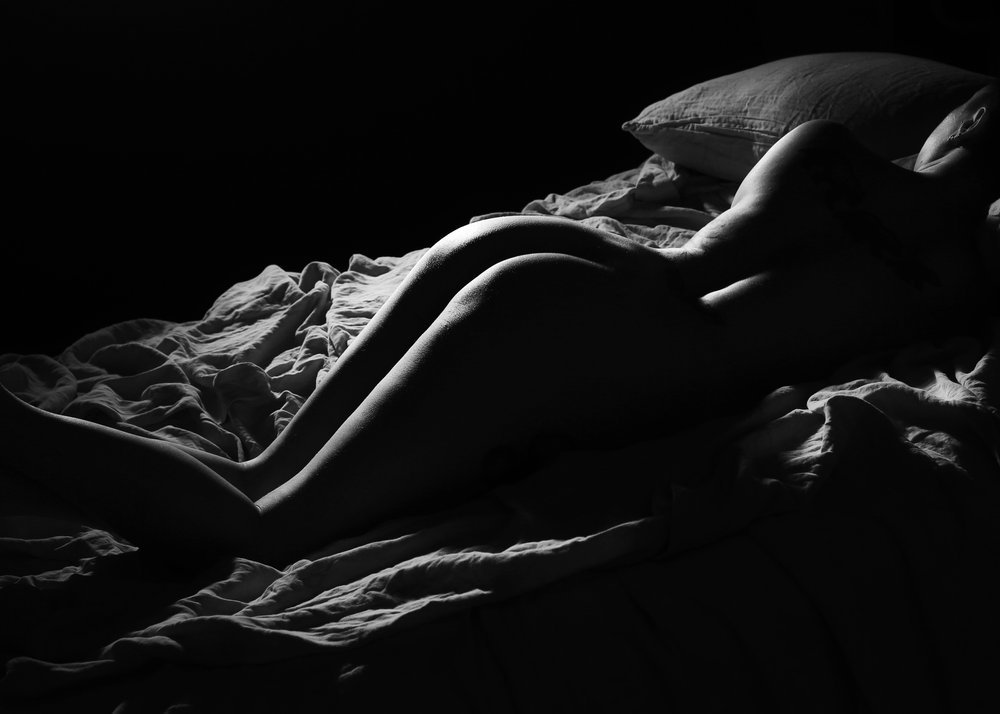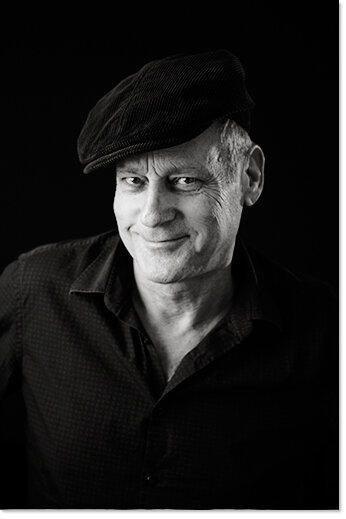A Short History of The Nude By Head Photographer, Neill
Divine Divas is one of the country’s foremost and most successful boudoir Photographic studios. Or so people tell us! My wife Jo and I converted a derelict Methodist Church into this awesome space in 2007. Once we had cut down the trees from within the Sunday school, got rid of the pews and rebuilt the walls we were up and shooting by April 2008! Originally, we shot families but since 2010 we have specialised in creating beautiful images of women. This is the work we absolutely love to do. Clients often (and I mean continually!) tell us that a Divine Divas photographic experience has been a life changing event and that the boudoir session has boosted their self-esteem and confidence. From the thousands (literally) of testimonials we have received it is clear that these shoots are transformative and life changing. To borrow a slogan “they’re not just a photoshoot but a divine photoshoot”! They are also a lot of fun, and, crucially, they allow women to fully express themselves and their sensuality. As one woman recently wrote in our visitor’s book, “thanks to Divine Divas, I have ‘ME’ back.’
Jo standing in the studio as it was when we bought it - with the pews still in it!
It’s Hip to Strip - Nudity In Modern Times
Naturism and nudity is having a fashionable resurgence recently. Naked quizzes, zoom meetings or gardening in the buff seemed to be all the rage in 2022. Has it been the pandemic that has made so many of us less inhibited? Maybe the health crisis has led to a more devil-may-care and liberated attitude. Whatever the case many celebrities have led the charge to strip off and be photographed in the nude. Heidi Klum, Ulrika Jonsson and Gwyneth Paltrow have all bared all for the camera and they report feeling fabulous as a result! More liberated and more themselves and even bursting with a new optimism. Boudoir photography, as a relatively new genre, has taken off and studios like Divine Divas have been inundated with bookings and enquiries. You can see some of the photos from the shoots in our Nude Gallery here. What is behind the popularity of boudoir shoots? Psychologists have put this post pandemic fervour to ‘go nude’ down to various causes. There is a new informality, toleration and inclusiveness that has been encouraged over the last few years. Working from home, the informality of zoom meetings and maybe the awareness of the fragility of life has broken down social norms.
Clothes, especially in the context of work uniforms and fashion, are status indicators. When these are taken away or less important many human judgments also vanish. Stripping off is seen as liberating and allows people to be seen as they really are. Most women, especially those who are beginning to feel ‘invisible’, are empowered by the experience. Vickie Shanks in her recent book Unravelled says “fear is not a reason for avoiding things”. She felt liberated and elated after her nude shoot and encourages others to love their bodies regardless of their natural reluctance to expose all. Those that do frequently stress that it was “good to be me” or that it ‘unleashed their inner Aphrodite’. Brooke Shields has recently created a brand called ‘Beginning Is Now’. It is based on the philosophy that no one should feel shame about their sexuality. She encourages her children to be open and unashamed about their innate sensuality. Life is too short to be puritanical or to repress one's natural desires, and in that vein of things, stripping off in a boudoir shoot is not only empowering, but healthy too.
The History of the Nude: In The Beginning There Was Sculpture…And A Lot of Shame
Masaccio’s “Expulsion From The Garden of Eden’
What has happened in the past informs the future. Nudity is not the same as nakedness. Nudity or the creation of a nude is an art form and, like all art forms, it has a history. The Greeks started and perfected this genre in the 5th century BC. Their idealised sculptures of female goddesses have never been surpassed. They are the paradigm of female ‘perfection’ and were suffused with an appreciation of feminine beauty and spirituality. They have influenced and dominated our views of idealised femininity and beauty for a millennia. It is from this prototype that the idea of a perfect or ideal body shape ultimately derives. However, it has in many ways diminished all other body types and mentally challenged women ever since. These sculptures were lost for hundreds of years and lay buried or forgotten until the Renaissance rediscovered them in the 14th century. At first, the lessons of the ancients around the creation of form and perspective were corralled by the dominant Christian views of that time. Within that culture nakedness symbolised man's vulnerability and fallen nature. One of the early renaissance masterpieces by Masaccio of Adam and Eve (painted in 1425) shows the couple shamefaced, naked and being expelled from the garden of Eden. At that time nakedness was seen as ‘nothing to be proud of’. Lucas Cranach’s Adam and Eve of 1526 is in the same vein. The two human bodies are coyly covered in fig leaves. Even the animals look away from the shame of the ‘original sin’ and the couple’s new vulnerability. Even the naked figure of Christ represented pain, abandonment and human sin. In these early renaissance works there was no celebration of the ‘Body Beautiful’. However as more lessons were learned from the classical masters the body began to be appreciated for itself alone.
Venus, Cupid, Folly and Time
A Shift: From Shame to Sexual Pleasure
Botticelli’s Birth of Venus of 1485 which so clearly references antique sculpture was one of the first to depict the human form without any Christian negativity. The nude in art in the succeeding centuries became more classical and secular. Michelangelo learned the techniques of creating form and balance and understood the idealising concepts of the ancient masters. His sculpture of David is a masterpiece of classical imitation. Although the Sistine Chapel is an illustration of Christian doctrine the naked figures themselves would not have been out of place in the Roman palace of Herculaneum. However Michelangelo was a mannerist artist and as such he was adapting and playing with some of the Greco/ Roman rules and conventions. Bronzino, another mannerist artist of the 16th century, painted one of the world's most sensual images. Venus, Cupid, Folly and Time of 1550 scandalised society not only because of its up-front nudity but also because it successfully depicts a moment of pure sexual pleasure. Despite its allegorical moral message, it still brilliantly expresses a powerful sensuality.
Moving From Myth to Reality, The First Painting of Pubic Hair & Women ‘Owning The Space’
As mannerism gave way to the Rococo nudes became even more liberated and realistic. The subjects were no longer based on mythological or historical stories which had given the nude an acceptable veneer of respectability. More homely scenes of women were depicted. Fragonard’s The Shirt removed of 1770 is a good example. It simply shows a woman in bed removing her top but it is intimate and sexy. From around this time women began to be depicted not as some alluring accessory to the main story but as a subject in themselves. In many ways they always were the main attraction. The mythologizing and storytelling was often the culture’s only way to make beautiful pictures of women acceptable. The ultimate ‘Fig Leaf’! There is no doubt that allegorical bathing scenes of Nymphs or Dryads were enjoyed regardless of whether you had a classical education or cared about the moralising symbolism. These rococo or romantic scenes scratched the surface of reality but were still essentially idealised. Boucher’s Miss O’Murphy is certainly of a real girl but the voluptuousness of the setting with its soft plump cushions, ravishing colours and peachy skin tones give the image a dream-like quality. The Romanticism of the late 18th century emphasised the dramatic, the spiritual or other worldly. Turner was of course the greatest painter in this style although I don’t think he ever painted a nude. Goya however, although more famous for his grim depictions of war, painted his mistress without a thread covering her. In fact his Maja Desnuda of 1790 is the first painting to show pubic hair. Realism, the School of Art, that came later took things a lot further. Reality seemed to be the ‘gift that kept on giving’. Pictures of ‘reality’ by its very nature are forever changing as cultures and perceptions gradually evolve. Courbet was the master or leader of the Realism school. And his image entitled the Origin of the World of 1866 is a closeup naturalistic painting of a vagina. Needless to say it was very shocking to some. Interestingly as I write today in June 2022 Madonna has just released a fully naked avatar of herself with butterflies flying out from her vagina. Courbet got there first!
Dejeurne Sur L’herbe
Manet’s nudes took a more culturally provocative approach. His Dejeurne Sur L’herbe and Olympia specifically break the rules about what a nude should be. Rather than demurely looking away from the viewer as though caught in a private moment both naked women stare defiantly at the viewer. They ‘own the space’ and rather than coy submissiveness have an entitlement and self empowerment that is completely new. This lack of so-called ‘modesty’ shocked some more people! The fact that the subject was also a prostitute who had so much confidence was considered immoral. Society was not ready to be deliberately confronted in this way.
The impressionists were idealists and romantics in their own way. The pretty colours, the misty scenes and liquid sun-drenched subjects depicted an unthreatening world of pastoral or urban bliss. Their nudes, although radical in their time, are similarly picturesque. Simple everyday scenes of bathing or brushing their hair have taken the place of mythological scenes of seduction, rape and incest. Degas’ Le Tub of 1886 for instance is compositionally innovative (inspired by photography!) and depicts the nude in such a prosaic activity that one can see this approach is culturally very different from the idealised goddesses from Greece. These pastels by Degas were painted with affection in a climate of security and prosperity. However winter was coming!
20th Century: What Did Two World Wars, Class Upheavals and a Russian Revolution Do To The Nude?
The 20th century saw two world wars, class upheavals and the Russian Revolution. It was altogether a darker more introspective environment. The horrors of war and psychoanalysis seemed to open up a Pandora’s box of worries and existential angst. Nudes were not immune to this existential atmosphere and the work of Egon Schiele and Otto Dix are both riven with darkness! Picasso was a great lover of the nude as a subject but unlike his predecessors he chose to immortalise his own life story and concerns in his work. His subjects were intimate friends and lovers. Les Desmoiselles d’Avignon of 1907 is probably one of the most revolutionary images of all time as it points the way towards cubism and modernism. The naked image of the three women have been seen from the new cubist viewpoint and also have their heads replaced with African masks. His nudes are suffused with an emotional, visceral charge that was entirely fresh.
Later in the century another twist was given to the nude through artists painting in a ‘Pop’ style. Andy Warhol, Roy Lichtenstein and Tom Wesselmann were print-makers using modern mass production techniques like silk screen printing and lithography to democratise their artworks and make them relevant and accessible to a modern audience. Pop Art was “provocative and unapologetic” and once again challenged the art establishment. This is the way Art moves forward! Wesselman’s ‘Monica siting with a Mondrian’ of 1989 is a nude that is pared back to its essential lines and shapes. It is bright and colourful but also elegant and sexy.
The Nude & Photographers
Robert Mapplethorpe’s black and white images of the naked body on the other hand are dark and dangerous. Although he was a master craftsman who had learnt from the photographic pioneers like Ansel Adams and Walker Evans his subject matter was very different. Rather than the majestic landscapes of Adams or the quiet social scenes of Walker, Mapplethorpe primarily photographed the male torso in a variety of erotic and revealing poses. The art is controversial, sexually brazen given the times and the homo-erotic nature of the work and, above all, beautifully crafted. They are elegantly lit and almost sculptural in their depiction of form.
Tillmans, the photographer, was encouraged by the down to earth magazines like ID or the contemporary fashion-led Face, and created a style that has been described as Anti-Beauty. However I think he found beauty and fascination in the everyday and the often overlooked world of reality. The 80s and 90s had many counter-culture trends (like Punk) and his imagery ran counter to the prevailing commercialisation of women and fashion found in the main-stream magazines. He does not deify his models but shows them with blemishes, imperfections and in all their marvellous diversity.
Wolfgang Tillmans
And So, We Come to Boudoir
In an article (Red magazine 2014) called ‘Goodbye Clothes’ Marianne Power bared her all as an artist’s model. She found it surprisingly transformative. “Stripping off is the ultimate mood boost”. For those who have body issues or low self esteem she says this is one way to feel confident and beautiful. It is both “physically and psychologically liberating”. The Greeks knew this and called it the “conquest of inhibition”. They believed in “human wholeness” and in an experience where “body and spirit are one”. She highlighted a number of naturist websites that cater to every interest. If you are a cyclist, cook, swimmer or love Yoga there are sites where you can indulge your passion in the nude. “If I can do a naked sun salutation I can definitely flounce around in my bikini” she encourages. A boudoir shoot is the ultimate naked experience as not only will you have a fun time collaborating with the photographer but you will also have a collection of images that celebrate the day and also celebrate yourself every day afterwards.
So what has this resume of the Nude in Art taught us about boudoir photography? The nude has been one of the main subjects in art since the beginning of time. The earliest examples like the Venus of Willendorf, a statuette representing fertility, were made nearly 30,000 years ago. Every period has looked at the subject afresh and reflects the values and ways of thinking of that culture. The naked human body can be seen in so many ways. The Greeks idealised it, The Italians expressed their newly forged humanist values through it and every artistic style from the romantics, neoclassicist, realists, impressionists, cubists, futurists and modernists express what they believe, think and feel through their nudes. Strange but true! Maybe not when one appreciates that women are literally the creators of human life on earth, nurturing as mothers and beautiful in all their body forms. Divine indeed!
What Does It Say About Society Today?
Today, as described above, there is a vogue for ‘stripping off’ and going nude in front of the camera. What do these images say about us? Today society is far more inclusive and democratic; diversity is celebrated. Technology has opened up this genre to everyone for the first time. The sort of Makeover or Beauty shoots we offer used to be the preserve of fashion models. Not anymore. The classical ideals that only a generation ago were revered are now seen as not only old fashioned but paternalistic and hierarchical. The ideal as represented by classical statues of Venus are seen now as only one type of body form. There are so many more. We are also more body positive and welcome feminine beauty in all shapes and sizes. An ideal based on mathematical principles and carved from stone without blemish is no longer a realistic benchmark. Sexism, misogyny, racism, discrimination, and ageism are being replaced by a celebration of variety and diversity.
Women, at last, are allowed to express their sexuality in an open and honest way. However, sometimes, to express this, bring it to the fore and make it more tangible, it needs the help of professionals who have the space and the all-important lighting equipment! We can match your personality to the style of photograph. We are not in the cookie cutting business so each shoot is unique to you. If you are not ready to bare all that’s fine. If you want to keep clothes on but still want to look hot, glamorous and sexy that’s also very fine indeed. If you love Audrey Hepburn or Marylyn Monroe or you want to look like a Rock Chic, Punk or an Athlete that’s just very OK with us! We love variety, diversity and independence and celebrate it every day.
Written by Neill Menneer - Head Photographer at Divine Divas
I have been a photographer all my life. After completing my degree in photography at Guildford (with a distinction!!) I won the Observer Photographic award and this gave me the confidence to go freelance. I subsequently worked regularly in London for some of the UK’s top magazines including Harpers and Queen and all the colour supplements. Jo and I came to Bath in 1987 but it was not until 2007 that we moved into our present studio. Since then we have won many business/Photographic awards (Bath Life, SWPP and Click Corporation) and hope that this reflects our dedication to customer service and the quality of our work. I still have a genuine passion for photography and love nothing more than creating art works of women, using all my knowledge of lighting and the human form. I strive for elegance and beauty in all that I do.











